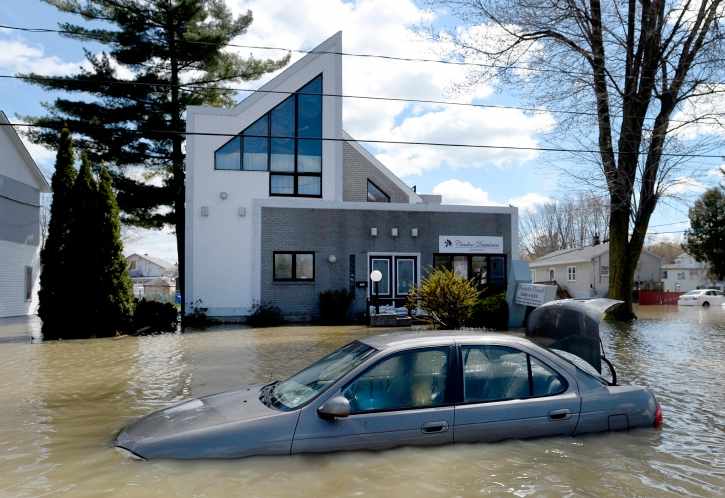Flooding is already one of the most costly perils for the re/insurance community and a recent report by AIR Worldwide shows flooding costs are set to skyrocket; it’s the risk with the most evidence from climate science supporting forecasts of an increase in frequency and intensity of both coastal and inland flood events.
 After extensive review of the latest from the climate science community AIR Worldwide said the impact of climate change “is most evident for inland and coastal floods” due to rising sea levels and changes to precipitation patterns.
After extensive review of the latest from the climate science community AIR Worldwide said the impact of climate change “is most evident for inland and coastal floods” due to rising sea levels and changes to precipitation patterns.
“There is relatively strong evidence in the historical record that precipitation‐related quantities including heavy precipitation events, have been increasing.”
“Unlike the analyses of how climate change will impact specific types of weather systems such as tropical cyclones, extratropical storms, and severe thunderstorms, the thermodynamics connecting a warming atmosphere to changes in precipitation are fairly straightforward,” the AIR report explained, “the warmer the air, the more moisture it can hold.”
“Heavy precipitation and concomitant pluvial (rain‐induced) inland flooding show robust 20th century trends in many regions.
“The clear physical basis between increasing saturation vapor pressure and increasing temperature gives confidence that the increasing trend in precipitation observed in many locations is influenced by climate change,” AIR explained.
Areas with significant increases in average annual precipitation trends, and thus with increasing risk of inland flooding, include: the United States, eastern South America, much of Europe, much of India, northwestern Asia and southeastern China.
In Contrast, decreasing precipitation trends were observed across the subtropics – global warming ramps up the intensity of already existing weather patterns.
The severity and frequency of coastal floods is clearly increasing, for the most part due to a rising mean sea level globally and this is expected to continue to accelerate into the 21st century; “Projections of an increase in flood frequency are robust; however, changes in the most extreme coastal floods will be driven more strongly by the characteristics of storm surge, which is more related to changes in TCs and ETCs. ”
Models forecast an increase in rate of sea level rise to more than 3mm per year – attributed to global warming induced “increased contribution from melting ice on land,” satellite‐derived observations show thinning, accelerating, and mass change of glaciers and ice sheets.
Impact of melting ice sheets is compounded by the almost equal impact to sea levels as thermal expansion of ocean water.
The report forecasts an overall expected global increase to sea levels by the end of the 21st century of 0.5 to 1 meter.
A gradual caving in or sinking of land is one of the main contributors to sea level rise along the U.S. Gulf Coast and sea levels increases have significantly higher than the global average, the report said “along the coast of the U.S. Northeast/Mid‐Atlantic, where increases of two to four times the global average of 2‐3 mm/year have been observed during the last 30 years.”
“In New York City, for example, flooding that occurred an average of 19 days per year from 1920 to 1970 now occurs an average of 99 days per year.”
And as global warming continues, coastal flood frequency is forecast for dramatic increase – these projections are supported by robust evidence of regional sea level continuing to rise at most locations across the globe and long-term continued thermal expansion of ocean water and melting ice sheets.
For the re/insurance community, this means demand for flood cover is set to increase dramatically in future years and underwriters and risk modellers will have to work to constantly adapt policies and update forecasts to ensure accurate pricing for this risk.
In some regions flood cover uptake could increase dramatically, while other regions could be at risk of becoming uninsurable or even uninhabitable with sky-high coastal flood risks.


